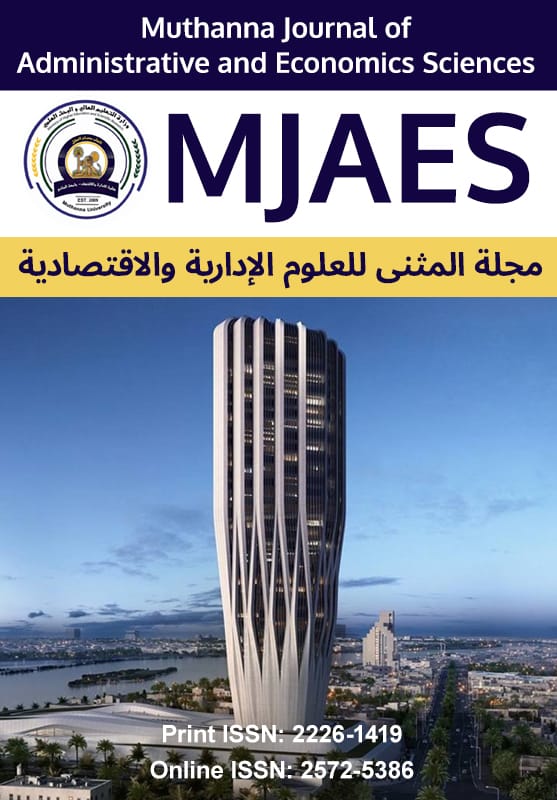Abstract
The current study aims to test the relationship between the social capital conduits and the effectiveness of work groups through the mediated role of conflict for a sample of 642 faculty members in the colleges of Al-Qadisiya University Distributed in (75) scientific departments. The social capital conduits variable includes two types: closure and bridging. The variable of group effectiveness has dealt with two dimensions: group performance and group viability. For conflict, as a mediator variable, includes two types: task conflict and relationship conflict. The main hypotheses of the study revolve around the basic idea that a group that has a balanced configuration of social capital conduits (bridges and closures) will have a low level of relationship conflict and task conflict, and will therefore be more effective than other groups lacking such configuration. The study adopted the sociometric approach in the collection of social capital data and the psychometric approach in the collection of the data for the other variables, by using an available measurements from the previous studies. Pearson correlation coefficient, multiple regression analysis, cluster Analysis and nonlinear regression analysis were used to test our hypotheses. The study findings showed the validity of hypotheses. According to these findings, a set of conclusions were formulated. Among the important conclusions, that the most effective scientific departments are those which have a balanced configuration of conduits: closure and bridges, compared to other departments which do not have it. In light of the study conclusions, a number of recommendations are introduced.
Abstract
يهدف البحث إلى اختبار العلاقة بين قنوات رأس المال الاجتماعي وفاعلية جماعات العمل من خلال الدور الوسيط للصراع لعينة من أعضاء الهيئة التدريسية في كليات جامعة القادسية البالغ عددهم (642)فرد موزعين على (75) قسم علمي . يضم متغير قنوات رأس المال الاجتماعي للجماعات نوعين من القنوات هما قنوات الاغلاق وقنوات التجسير اما متغير فاعلية جماعات العمل فقد تناول بعدين هما أداء الجماعة واستمرار الجماعة وبالنسبة للصراع فقد تبوء مكانته كمتغير وسيط من خلال نوعيه: صراع العلاقات وصراع المهمة. وتدور ابرز فرضيات الدراسة حول فكرة أساسية مفادها ان الجماعة التي تمتلك تشكيله متوازنة من قنوات رأس المال الاجتماعي (التجسير والاغلاق) سينخفض لديها مستوى صراع العلاقات ويزداد لديها مستوى صراع المهمةوبالتالي ستكون فاعليتها اكبر من الجماعات الاخرى التي تمتلك تشكيلة غير متوازنة. وقد تبنت الدراسة مدخل السيسومترك في جمع بيانات قنوات رأس المال الاجتماعي والمدخل السيكومترك في جمع بيانات باقي المتغيرات بالاعتماد على مقاييس جاهزة في الدراسات السابقة والتي وظفت لاختبار فرضيات الدراسة من خلال استخدام معامل الارتباط البسيط (Pearson) وتحليل الانحدار المتعدد(Multiple Regression) والتحليل العنقودي (Cluster Analysis) وتحليل الانحدار اللاخطي (Nonlinear Regression). وقد أثبتت الدراسة صحة اغلب فرضياتها والتي على أساسها تم التوصل إلى مجموعة من الاستنتاجات وكان من أبرزها ان الأقسام العلمية الأكثر فاعلية هي تلك الأقسام التي تمتلك تشكيلة متوازنة من قنوات الإغلاق وقنوات التجسير مقارنة بالأقسام الأخرى التي لا تمتلك. و في ضوء الاستنتاجات صيغت توصيات الدراسة التي تعتبر ذات قيمة للمنظمة المبحوثة إذا ما تم الأخذ بها.
